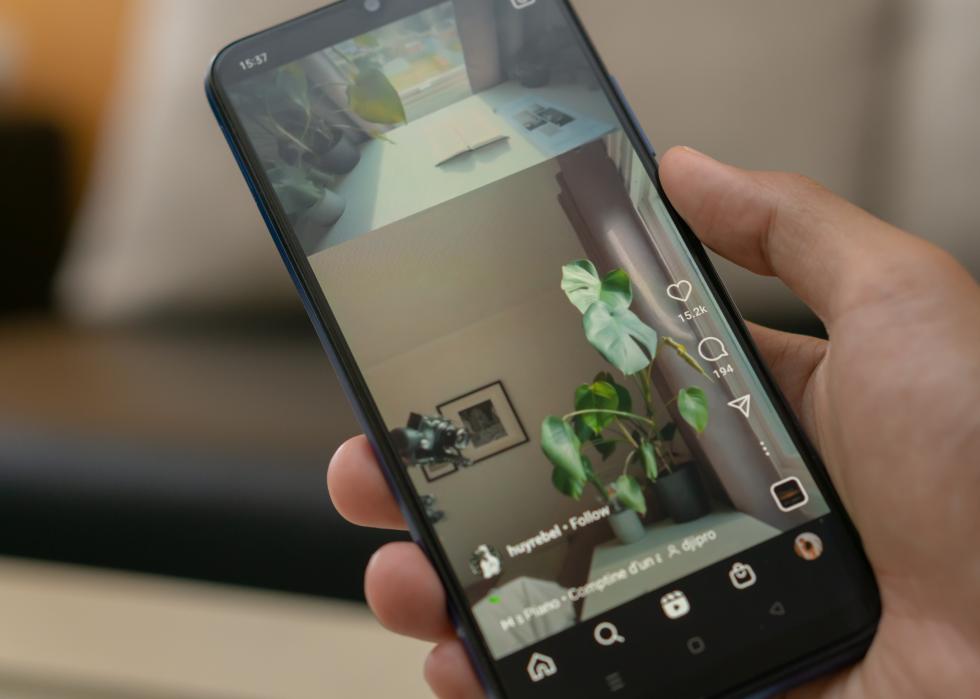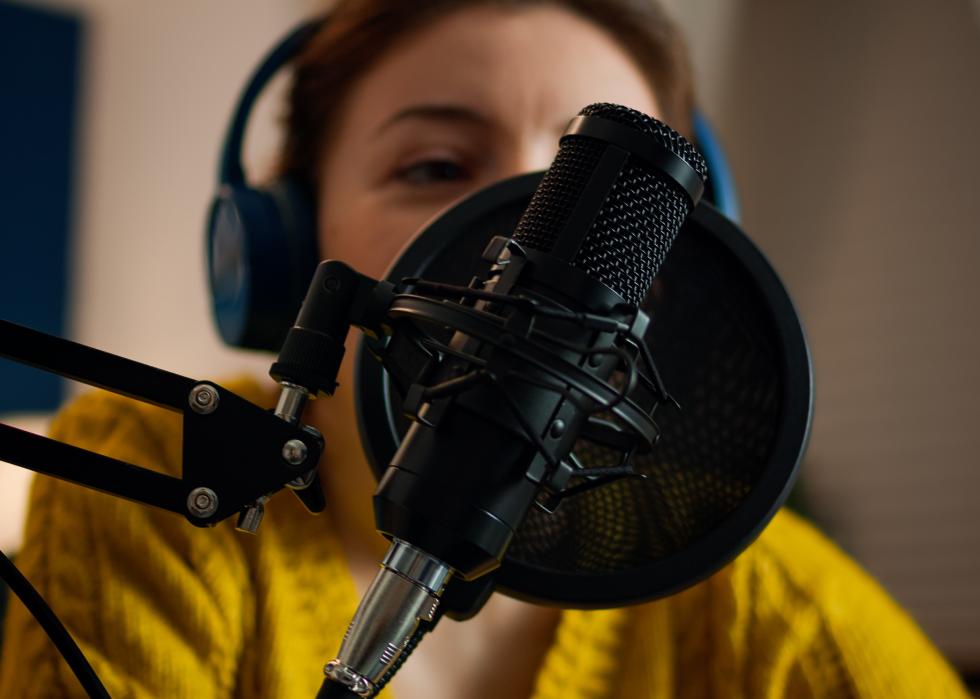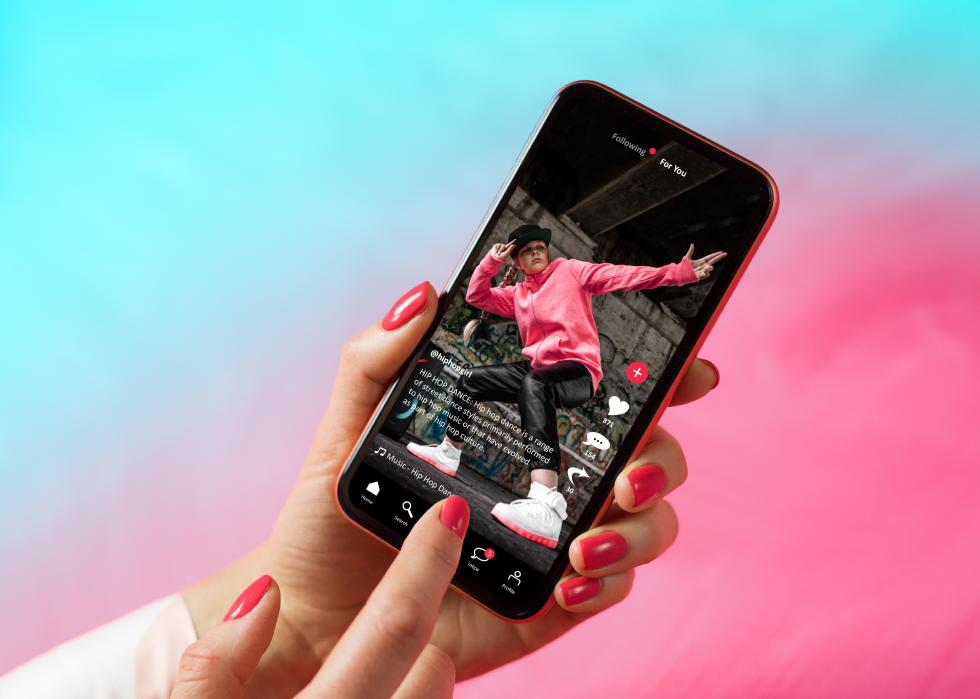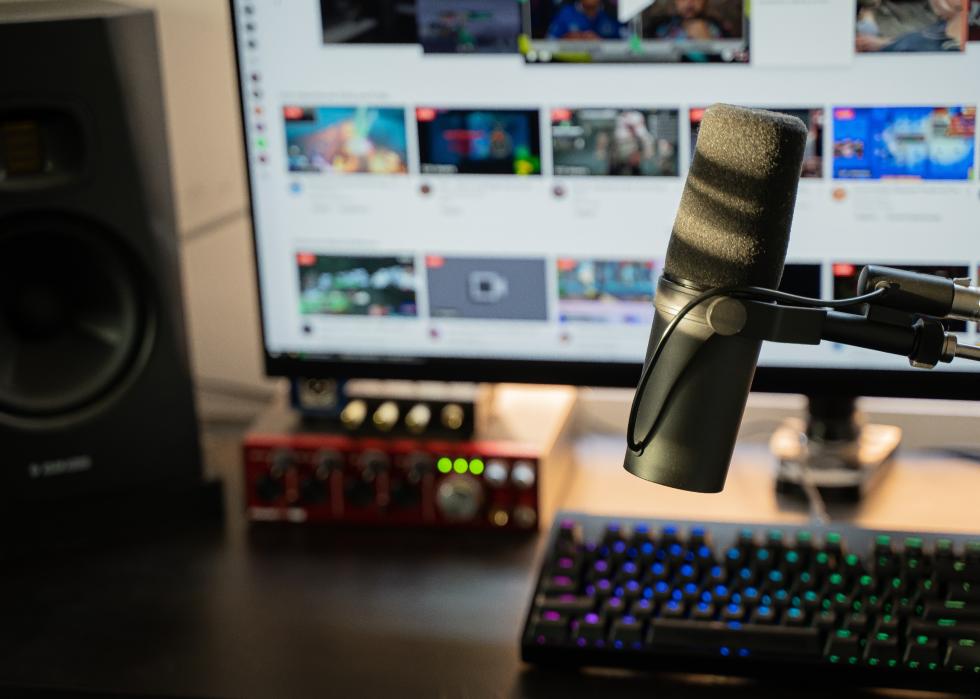
How 8 platforms pay content creators, from TikTok to YouTube
This story originally appeared on Planoly and was produced and distributed in partnership with Stacker Studio.
How 8 platforms pay content creators, from TikTok to YouTube
The days of content creators being compensated with beauty products and swag may soon be over as the now-multibillion-dollar content creation industry transitions toward monetary compensation from platforms.
To illustrate various pay-to-create models, Planoly examined the business models and creator compensation programs for eight of the biggest online media platforms to see how they compare.
The digital creator economy—which includes millions of writers, streamers, beauty vloggers, and more—has exploded in recent years, leading many social media platforms to launch creator fund initiatives. In 2020, when TikTok launched its creator fund with a $200 million initial investment, the platform said it would accrue to $1 billion within the U.S. and globally in three years.
In the past, content creators had to go out on their own to forge partnerships with brands in order to make a living online. Now, platforms are paying influencers to create content and increase engagement with viewers—whether encouraging them to use the Reels feature on Instagram or live streams on YouTube.
Creator funds serve as a way of cutting content creators a slice of the monetary pie. Some sites have tipping or subscription options where creators can earn money, but these are not necessarily through the platform itself. Twitter is working on a plan to pay creators but doesn’t offer this yet. The ability of these fairly new funding initiatives to attract and keep quality talent remains to be seen, but it may be a start in developing a steady business model for creative partnerships.
Keep reading to learn more about how content creators are getting paid by major online platforms.

Facebook’s bonus programs
In 2021, Meta announced it would invest $1 billion toward Facebook and Instagram’s creator programs as an option for creators to earn money. The investment would be used for creator funds and other monetization programs.
Some of Facebook’s bonus programs include in-stream ads, “Star Challenges” for gaming creators, and the Reels summer bonus. Each model is different, rewarding influencers for things like signing up for ad embeds in their videos, utilizing Reels, or going live with another account.
For years, Facebook, one of the premier social platforms, didn’t work much with influencers. The social platform. however has been singing a different tune lately. Mark Zuckerberg announced he would not take a percentage of revenue from content creators until 2023.

Instagram’s Reels
Instagram is offering massive sums of money to creators to post short, multi-clip videos on its Reels feature—if the videos amass a high view count, that is. TikTok’s short-video format became huge in the digital world—so much so that competing platform Instagram was inspired to offer creators as much as $35,000 to post on its Reels feature.
Instagram, the social platform most known for introducing the influencer concept, allows its creators to earn income in various ways. There’s the option of earning income through sponsored content, licensing content produced, and creating an Instagram shop. Content creators with a minimum of 5,000 Instagram followers and a little over 300 sponsored posts can earn $100,000 in a year.

Pinterest’s Creator Rewards
When people think of influencers, Pinterest may not be the first social platform that comes to mind. Pinterest is one of many platforms that’s also tapped the creator compensation approach and recently launched its Creator Rewards. In the program, content creators are compensated for their “inspiring, actionable content” and can tag brands that they’ve partnered with.
To qualify for the program, participants must be located in the U.S., have a Pinterest business account, and of course, create original content.

Snapchat’s Spotlight
Snapchat motivated users to submit clips for Spotlight consideration by offering a daily pool of more than $1 million to users who create entertaining snaps.
In 2021, Snapchat launched Spotlight as an incentive for creators to develop short-form viral videos. Through Spotlight Challenges, monetary prizes range from $1,000 to $25,000, depending on the challenge. The app has also expanded its Creator Marketplace, which allows more opportunities for businesses to partner with creators. In the past, Snapchat connected its creators with advertisers through its Storytellers Program, which introduces brands to the app’s top content creators.

Spotify’s Creator Fund
Live audio creators on Spotify can apply to be part of the platform’s fund for payouts.
Content creators with a focus on live audio are eligible to create content and build their own community in Spotify’s live audio app through its Greenroom Creator Fund. Participants can receive payouts, which are calculated weekly for their work based on the size of their audience and content.
The app allows creators to connect with their audience in real-time through unique features like “gems,” where listeners can double-tap a button whenever they hear something they like. Spotify decided to roll out the Creator Fund due to the recent popularity of real-time audio connections and to recognize the creators behind entertaining audio content.

TikTok’s pay-per-view plan
TikTok is paying its content creators monthly through the Creator Fund, an initiative that was launched in the spring of 2021. TikTok says the Creator Fund is a way to show its content creators appreciation and celebrate them for creating inspirational, entertaining videos. Through the Creator Fund, TikTok pays between 2 and 4 cents per 1,000 video views. Eligibility includes having a minimum of 10,000 real followers.

Twitch’s Ads Incentive Program
In February 2022, Twitch rolled out its Ads Incentive Program, which could help content creators earn more steady income. The program pays select streamers a set monthly revenue. There are options for different payouts based on how many ads are run per hour and the length of hours the ads have been streamed.
The number of funds paid will vary by creator, but according to Twitch, there’s no cap on the income that can be earned.

YouTube’s Partner Program
YouTube will reach out to the creators who generate the most views and engagements every month to reward them for their videos via YouTube Shorts (different than ads on regular YouTube videos).
It’s still possible to make a living as a content creator on YouTube, and there are various ways to monetize your following on the platform. The Youtube Partner Program grants content creators more access to YouTube resources such as additional funds from ads and revenue sharing. An AdSense account is needed to get started, and users have to agree to YouTube’s monetization policies.
Affiliate marketing is a popular method that many content creators use for additional income. For example, you can advertise a product for a brand and include the affiliate link. When someone clicks on the affiliate link to purchase the product, the creator earns a small percentage of the sale. Over time, these small commissions add up and can even build into a livable wage. YouTube Shorts creators can earn between $100 to $100,000 if their videos go viral.



